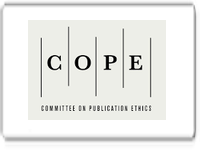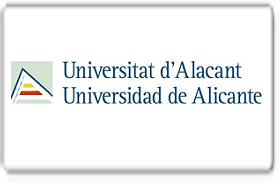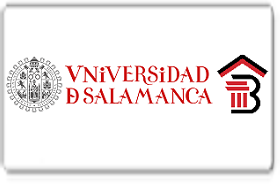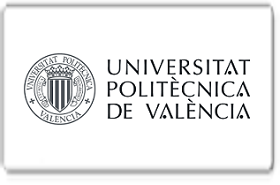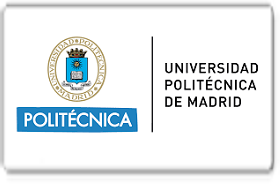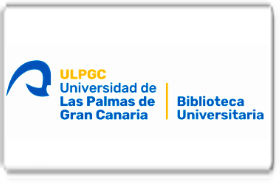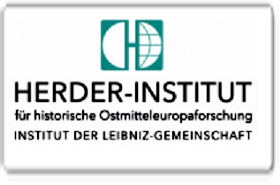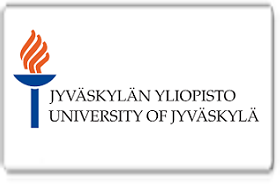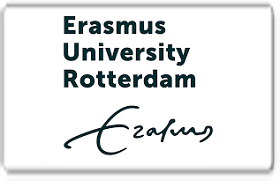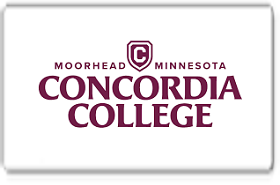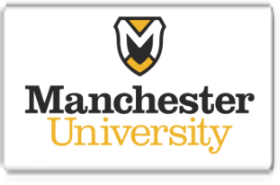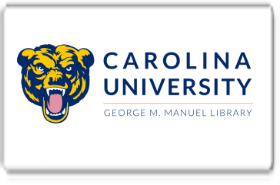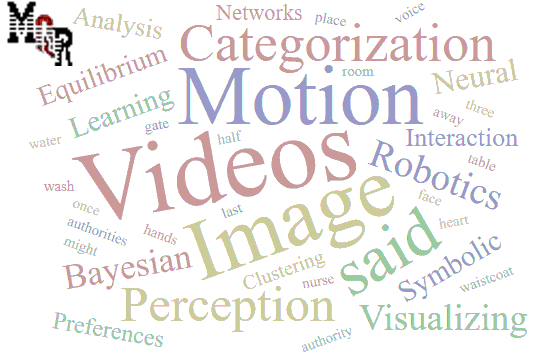Andamios en Endodoncia Regenerativa: Un Análisis de las Tendencias, Desafíos y Futuras Direcciones.
DOI:
https://doi.org/10.56048/MQR20225.8.1.2024.633-651Palabras clave:
Cultivo celular tridimensional, endodoncia regenerativa, plasma sanguíneoResumen
Esta revisión destaca la importancia de equilibrar la ingeniería de tejidos con las demandas biológicas en la endodoncia regenerativa. Se prefiere el uso de coágulos sanguíneos y concentrados de plaquetas como andamios. La variabilidad en los resultados resalta la necesidad de enfoques personalizados. Aunque se han logrado avances notables, la falta de un andamio ideal subraya la complejidad y la necesidad de investigaciones futuras. La inclusión de estudios clínicos y metaanálisis proporciona una visión completa, pero se destaca la importancia de investigaciones más rigurosas para fortalecer la evidencia científica.
La endodoncia regenerativa busca preservar la función dental mediante la revitalización pulpar. La ingeniería de tejidos, con células mesenquimáticas, factores de crecimiento y andamios, es crucial. Estos andamios, ya sean porosos o acelulares, pueden prepararse con polímeros, materiales naturales o matriz extracelular. El diseño cuidadoso del andamiaje es crucial para la adhesión, migración y diferenciación celular.
La revisión de la literatura analiza tendencias, desafíos y avances en andamios de endodoncia regenerativa. Se realizaron búsquedas en PubMed, identificando 487 artículos, de los cuales 11 fueron revisados detalladamente.
Los resultados destacan tendencias en el uso de andamios naturales como coágulos sanguíneos y concentrados de plaquetas, así como avances con biocerámicos y polímeros sintéticos. La revisión discute investigaciones clínicas, metaanálisis y estudios prospectivos que evalúan la eficacia de diversos andamios en la regeneración dentino-pulpar.
La conclusión resalta la importancia de los coágulos sanguíneos y andamios basados en plasma sanguíneo en endodoncia regenerativa, aunque señala la necesidad de más investigaciones para consolidar estos avances prometedores en el campo.
Descargas
Métricas
Cited
DOI: 10.56048![]()
Citas
Abdollahiyan, P., Oroojalian, F., & Mokhtarzadeh, A. (2021). The triad of nanotechnology, cell signalling, and scaffold implantation for the successful repair of damaged organs: An overview on soft-tissue engineering. In Journal of Controlled Release (Vol. 332, pp. 460–492). Elsevier B.V. https://doi.org/10.1016/j.jconrel.2021.02.036
Ahmed, G. M., Abouauf, E. A., Abubakr, N., Dörfer, C. E., & El-Sayed, K. F. (2020). Tissue Engineering Approaches for Enamel, Dentin, and Pulp Regeneration: An Update. Stem Cells International, 2020. https://doi.org/10.1155/2020/5734539
Alghamdi, F. T., & Alqurashi, A. E. (2020). Regenerative Endodontic Therapy in the Management of Immature Necrotic Permanent Dentition: A Systematic Review. In Scientific World Journal (Vol. 2020). Hindawi Limited. https://doi.org/10.1155/2020/7954357
Altaii, M., Richards, L., & Rossi-Fedele, G. (2017). Histological assessment of regenerative endodontic treatment in animal studies with different scaffolds: A systematic review. In Dental Traumatology (Vol. 33, Issue 4, pp. 235–244). Blackwell Munksgaard. https://doi.org/10.1111/edt.12338
Araújo, L. De, Goulart, T. S., Gil, A. C. K., Schuldt, D. P. V., Coelho, B. S., Figueiredo, D. D. R., Garcia, L. D. F. R., & De Almeida, J. (2022). Do alternative scaffolds used in regenerative endodontics promote better root development than that achieved with blood clots? Brazilian Dental Journal, 33(2), 22–32. https://doi.org/10.1590/0103-6440202204746
Asghari, F., Salehi, R., Agazadeh, M., Alizadeh, E., Adibkia, K., Samiei, M., Akbarzadeh, A., Aval, N. A., & Davaran, S. (2016). The odontogenic differentiation of human dental pulp stem cells on hydroxyapatite-coated biodegradable nanofibrous scaffolds. International Journal of Polymeric Materials and Polymeric Biomaterials, 65(14), 720–728. https://doi.org/10.1080/00914037.2016.1163564
Bansal, R., & Bansal, R. (2011). Regenerative endodontics: A state of the art. Indian Journal of Dental Research, 22(1), 122–131. https://doi.org/10.4103/0970-9290.79977
Bindal, P., Kasim, N. H. A., Ramasamy, T. S., Dabbagh, A., Moharamzadeh, K., & Chai, W. L. (2017). Dental pulp tissue engineering and regenerative endodontic therapy. In Biomaterials for Oral and Dental Tissue Engineering (pp. 297–318). Elsevier Inc. https://doi.org/10.1016/B978-0-08-100961-1.00018-9
Brizuela, C., Meza, G., Urrejola, D., Quezada, M. A., Concha, G., Ramírez, V., Angelopoulos, I., Cadiz, M. I., Tapia-Limonchi, R., & Khoury, M. (2020). Cell-Based Regenerative Endodontics for Treatment of Periapical Lesions: A Randomized, Controlled Phase I/II Clinical Trial. Journal of Dental Research, 99(5), 523–529. https://doi.org/10.1177/0022034520913242
Carriero, V. C., Di Muzio, L., Petralito, S., Casadei, M. A., & Paolicelli, P. (2023). Cryogel Scaffolds for Tissue-Engineering: Advances and Challenges for Effective Bone and Cartilage Regeneration. In Gels (Vol. 9, Issue 12). Multidisciplinary Digital Publishing Institute (MDPI). https://doi.org/10.3390/gels9120979
Chandra, P. K., Soker, S., & Atala, A. (2020). Tissue engineering: Current status and future perspectives. In Principles of Tissue Engineering (pp. 1–35). Elsevier. https://doi.org/10.1016/B978-0-12-818422-6.00004-6
Chen, S., Gil, C. J., Ning, L., Jin, L., Perez, L., Kabboul, G., Tomov, M. L., & Serpooshan, V. (2021). Adhesive Tissue Engineered Scaffolds: Mechanisms and Applications. In Frontiers in Bioengineering and Biotechnology (Vol. 9). Frontiers Media S.A. https://doi.org/10.3389/fbioe.2021.683079
Dissanayaka, W. L., & Zhang, C. (2020). Scaffold-based and Scaffold-free Strategies in Dental Pulp Regeneration. Journal of Endodontics, 46(9), S81–S89. https://doi.org/10.1016/j.joen.2020.06.022
Donnaloja, F., Jacchetti, E., Soncini, M., & Raimondi, M. T. (2020). Natural and synthetic polymers for bone scaffolds optimization. In Polymers (Vol. 12, Issue 4). MDPI AG. https://doi.org/10.3390/POLYM12040905
Ebhodaghe, S. O. (2021). Natural Polymeric Scaffolds for Tissue Engineering Applications. In Journal of Biomaterials Science, Polymer Edition (Vol. 32, Issue 16, pp. 2144–2194). Taylor and Francis Ltd. https://doi.org/10.1080/09205063.2021.1958185
ElSheshtawy, A. S., Nazzal, H., El Shahawy, O. I., El Baz, A. A., Ismail, S. M., Kang, J., & Ezzat, K. M. (2020). The effect of platelet-rich plasma as a scaffold in regeneration/revitalization endodontics of immature permanent teeth assessed using 2-dimensional radiographs and cone beam computed tomography: a randomized controlled trial. International Endodontic Journal, 53(7), 905–921. https://doi.org/10.1111/iej.13303
Jazayeri, H. E., Lee, S.-M., Kuhn, L., Fahimipour, F., Tahriri, M., & Tayebi, L. (2019). Polymeric Scaffolds for Dental Pulp Tissue Engineering: A Review.
Jiang, X., Liu, H., & Peng, C. (2017). Clinical and Radiographic Assessment of the Efficacy of a Collagen Membrane in Regenerative Endodontics: A Randomized, Controlled Clinical Trial. Journal of Endodontics, 43(9), 1465–1471. https://doi.org/10.1016/j.joen.2017.04.011
Kim, S. G., Malek, M., Sigurdsson, A., Lin, L. M., & Kahler, B. (2018). Regenerative endodontics: a comprehensive review. In International Endodontic Journal (Vol. 51, Issue 12, pp. 1367–1388). Blackwell Publishing Ltd. https://doi.org/10.1111/iej.12954
Koç, S., & Del Fabbro, M. (2020). Does the Etiology of Pulp Necrosis Affect Regenerative Endodontic Treatment Outcomes? A Systematic Review and Meta-analyses. In Journal of Evidence-Based Dental Practice (Vol. 20, Issue 1). Mosby Inc. https://doi.org/10.1016/j.jebdp.2020.101400
Liu, H., Lu, J., Jiang, Q., Haapasalo, M., Qian, J., Tay, F. R., & Shen, Y. (2022). Biomaterial scaffolds for clinical procedures in endodontic regeneration: Biomaterial scaffolds in endodontic regeneration. Bioactive Materials, 12, 257–277. https://doi.org/10.1016/j.bioactmat.2021.10.008
Lutzweiler, G., Halili, A. N., & Vrana, N. E. (2020). The overview of porous, bioactive scaffolds as instructive biomaterials for tissue regeneration and their clinical translation. In Pharmaceutics (Vol. 12, Issue 7, pp. 1–29). MDPI AG. https://doi.org/10.3390/pharmaceutics12070602
Mathew, A. P., Augustine, R., Kalarikkal, N., & Thomas, S. (n.d.). TISSUE ENGINEERING: PRINCIPLES, RECENT TRENDS AND THE FUTURE.
Matichescu, A., Ardelean, L. C., Rusu, L. C., Craciun, D., Bratu, E. A., Babucea, M., & Leretter, M. (2020). Advanced biomaterials and techniques for oral tissue engineering and regeneration—a review. In Materials (Vol. 13, Issue 22, pp. 1–37). MDPI AG. https://doi.org/10.3390/ma13225303
Noohi, P., Abdekhodaie, M. J., Nekoofar, M. H., Galler, K. M., & Dummer, P. M. H. (2022). Advances in scaffolds used for pulp–dentine complex tissue engineering: A narrative review. In International Endodontic Journal (Vol. 55, Issue 12, pp. 1277–1316). John Wiley and Sons Inc. https://doi.org/10.1111/iej.13826
Nowicka, A., Miller-Burchacka, M., Lichota, D., Metlerska, J., & Gońda-Domin, M. (2021). Tissue engineering application in regenerative endodontics. Pomeranian J Life Sci, 67(2), 10–17. https://doi.org/10.21164/pomjlifesci.718
Pulyodan, M. K., Mohan, S. P., Valsan, D., Divakar, N., Moyin, S., & Thayyil, S. (2020). Regenerative endodontics: A paradigm shift in clinical endodontics. In Journal of Pharmacy and Bioallied Sciences (Vol. 12, Issue 5, pp. S20–S26). Wolters Kluwer Medknow Publications. https://doi.org/10.4103/jpbs.JPBS_112_20
Reddy, M. S. B., Ponnamma, D., Choudhary, R., & Sadasivuni, K. K. (2021). A comparative review of natural and synthetic biopolymer composite scaffolds. In Polymers (Vol. 13, Issue 7). MDPI AG. https://doi.org/10.3390/polym13071105
Ríos-Osorio, N., Caviedes-Bucheli, J., Jimenez-Peña, O., Orozco-Agudelo, M., Mosquera-Guevara, L., Jiménez-Castellanos, F. A., & Muñoz-Alvear, H. D. (2023). Comparative outcomes of platelet concentrates and blood clot scaffolds for regenerative endodontic procedures: A systematic review of randomized controlled clinical trials. Journal of Clinical and Experimental Dentistry, 15(3). https://doi.org/10.4317/jced.60150
Sabeti, M., Ghobrial, D., Zanjir, M., da Costa, B. R., Young, Y., & Azarpazhooh, A. (2023). Treatment outcomes of regenerative endodontic therapy in immature permanent teeth with pulpal necrosis: A systematic review and network meta-analysis. In International Endodontic Journal. John Wiley and Sons Inc. https://doi.org/10.1111/iej.13999
Santhakumar, M., Yayathi, S., & Retnakumari, N. (2018). A clinicoradiographic comparison of the effects of platelet-rich fibrin gel and platelet-rich fibrin membrane as scaffolds in the apexification treatment of young permanent teeth. Journal of Indian Society of Pedodontics and Preventive Dentistry, 36(1), 65–70. https://doi.org/10.4103/JISPPD.JISPPD_180_17
Sharma, P., Kumar, P., Sharma, R., Bhatt, V. D., & Dhot, P. S. (2019). Tissue Engineering; Current Status & Futuristic Scope. Journal of Medicine and Life, 2019(3), 225–229. https://doi.org/10.25122/jml-2019-0032
Shoushrah, S. H., Transfeld, J. L., Tonk, C. H., Büchner, D., Witzleben, S., Sieber, M. A., Schulze, M., & Tobiasch, E. (2021). Sinking our teeth in getting dental stem cells to clinics for bone regeneration. In International Journal of Molecular Sciences (Vol. 22, Issue 12). MDPI. https://doi.org/10.3390/ijms22126387
Tang, Q., Jin, H., Lin, S., Ma, L., Tian, T., & Qin, X. (2022). Are platelet concentrate scaffolds superior to traditional blood clot scaffolds in regeneration therapy of necrotic immature permanent teeth? A systematic review and meta-analysis. BMC Oral Health, 22(1). https://doi.org/10.1186/s12903-022-02605-4
Ulusoy, A. T., Turedi, I., Cimen, M., & Cehreli, Z. C. (2019). Evaluation of Blood Clot, Platelet-rich Plasma, Platelet-rich Fibrin, and Platelet Pellet as Scaffolds in Regenerative Endodontic Treatment: A Prospective Randomized Trial. Journal of Endodontics, 45(5), 560–566. https://doi.org/10.1016/j.joen.2019.02.002
Wang, M., Wu, Y., Li, G., Lin, Q., Zhang, W., Liu, H., & Su, J. (2024). Articular cartilage repair biomaterials: strategies and applications. Materials Today Bio, 24, 100948. https://doi.org/10.1016/j.mtbio.2024.100948
Wen, N., Qian, E., & Kang, Y. (2021). Effects of macro-/micro-channels on vascularization and immune response of tissue engineering scaffolds. In Cells (Vol. 10, Issue 6). MDPI. https://doi.org/10.3390/cells10061514
Widbiller, M., Knüttel, H., Meschi, N., & Durán-Sindreu Terol, F. (2023). Effectiveness of endodontic tissue engineering in treatment of apical periodontitis: A systematic review. In International Endodontic Journal (Vol. 56, Issue S3, pp. 533–548). John Wiley and Sons Inc. https://doi.org/10.1111/iej.13784
Wu, D. T., Munguia-Lopez, J. G., Cho, Y. W., Ma, X., Song, V., Zhu, Z., & Tran, S. D. (2021). Polymeric scaffolds for dental, oral, and craniofacial regenerative medicine. In Molecules (Vol. 26, Issue 22). MDPI. https://doi.org/10.3390/molecules26227043
Yazdanian, M., Arefi, A. H., Alam, M., Abbasi, K., Tebyaniyan, H., Tahmasebi, E., Ranjbar, R., Seifalian, A., & Rahbar, M. (2021). Decellularized and biological scaffolds in dental and craniofacial tissue engineering: a comprehensive overview. In Journal of Materials Research and Technology (Vol. 15, pp. 1217–1251). Elsevier Editora Ltda. https://doi.org/10.1016/j.jmrt.2021.08.083
Zhang, F., & King, M. W. (2020). Biodegradable Polymers as the Pivotal Player in the Design of Tissue Engineering Scaffolds. In Advanced Healthcare Materials (Vol. 9, Issue 13). Wiley-VCH Verlag. https://doi.org/10.1002/adhm.201901358
Zhao, Q., Zhou, Y., & Wang, M. (2021). Three-dimensional endothelial cell incorporation within bioactive nanofibrous scaffolds through concurrent emulsion electrospinning and coaxial cell electrospraying. Acta Biomaterialia, 123, 312–324. https://doi.org/10.1016/j.actbio.2021.01.035
Publicado
Cómo citar
Número
Sección
Categorías
Licencia

Esta obra está bajo una licencia internacional Creative Commons Atribución 4.0.
Los autores se comprometen a respetar la información académica de otros autores, y a ceder los derechos de autor a la Revista MQRInvestigar, para que el artículo pueda ser editado, publicado y distribuido. El contenido de los artículos científicos y de las publicaciones que aparecen en la revista es responsabilidad exclusiva de sus autores. La distribución de los artículos publicados se realiza bajo una licencia 


















